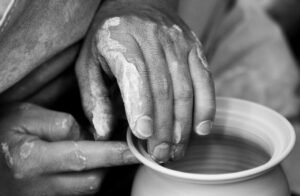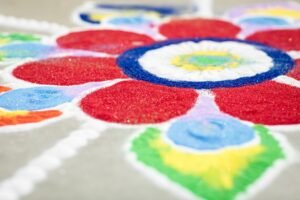Comprehensive Guide of Snowshoeing
Overview
Snowshoeing is an outdoor recreational activity that involves walking over snow while wearing specially designed footwear called snowshoes. These shoes are equipped with a wide, flat surface that distributes the wearer’s weight over a larger area, preventing them from sinking into the snow. Snowshoeing can be enjoyed on various terrains, from flat trails to steep hills, making it a versatile winter sport. It offers a unique way to experience the beauty of winter landscapes, providing both a cardiovascular workout and an opportunity to connect with nature. Snowshoeing is accessible to people of all fitness levels and can be done solo or in groups, making it a popular choice for families and outdoor enthusiasts alike.
History
The origins of snowshoeing can be traced back thousands of years to indigenous peoples in cold climates, who developed the first snowshoes to travel across deep snow. These early snowshoes were typically made from wood and animal hides, designed to aid in hunting and transportation. As snowshoeing evolved, different cultures adapted the design to suit their specific environments, leading to various styles and materials. In the 19th century, snowshoeing gained popularity as a recreational activity in North America, particularly in Canada and the northern United States. The introduction of modern materials, such as aluminum and synthetic fabrics, has transformed snowshoe design, making them lighter and more efficient, thus broadening the appeal of the sport.
Popularity and Demographics
Snowshoeing has seen a significant rise in popularity in recent years, particularly as more people seek outdoor activities that promote physical fitness and mental well-being during the winter months. According to the Outdoor Industry Association, millions of people in the United States participate in snowshoeing each year, with a notable increase in participation among families and individuals looking for affordable outdoor recreation. The sport appeals to a diverse demographic, including young adults, families, and older individuals, as it requires minimal equipment and can be enjoyed in various settings, from local parks to backcountry trails. Additionally, the growth of snowshoeing clubs and organized events has fostered a sense of community among enthusiasts, further contributing to its popularity.
Sponsored Hobbyists and Vendors
Become a Sponsor!
Affiliate Disclaimer: Throughout some sections below, Hobby Spotlight may suggest some tools, equipment or material using affiliate links. By purchasing any of those items, Hobby Spotlight may earn a small commission. This helps fund our website, content and services without directly charging our users.
Getting Started
Essential Snowshoeing Gear:
Beginner
- Snowshoes: Basic snowshoes suitable for beginners.
- Trekking Poles: Adjustable trekking poles for stability and support.
- Winter Boots: Insulated and waterproof boots for snowshoeing.
- Warm Gloves: Insulated gloves to keep hands warm in cold weather.
- Thermal Socks: Warm, moisture-wicking socks for comfort.
Intermediate
- Advanced Snowshoes: Snowshoes with enhanced features for varied terrain.
- Backpack: Durable backpack for carrying gear on longer hikes.
- Gaiters: Waterproof gaiters to keep snow out of boots.
- Insulated Jacket: Warm, insulated jacket for cold weather protection.
- Map and Compass: Essential navigation tools for backcountry snowshoeing.
Basic Requirements and Initial Setup:
- Snowshoeing Gear: Essential equipment includes snowshoes, which come in various sizes and styles depending on the terrain and snow conditions. Proper footwear, such as waterproof boots with good insulation, is also crucial for comfort and warmth.
- Clothing Layers: Dress in layers to regulate body temperature. Start with moisture-wicking base layers, add insulating layers like fleece, and finish with a waterproof and windproof outer layer to protect against the elements.
- Safety Equipment: Carry essential safety gear, including a map, compass or GPS, first aid kit, and a whistle. It’s also advisable to have trekking poles for stability and balance on uneven terrain.
Fundamental Skills to Learn:
- Basic Snowshoeing Technique: Learn how to walk with snowshoes, including proper foot placement and stride to maintain balance and efficiency.
- Navigation Skills: Understanding how to read maps and use a compass or GPS is vital for safe exploration in snowy environments.
- Weather Awareness: Being able to assess weather conditions and recognize signs of changing weather is important for safety.
- Physical Conditioning: Building endurance and strength through regular exercise will enhance your snowshoeing experience and reduce fatigue.
- Trail Etiquette: Knowing how to share trails with other users, including skiers and hikers, promotes a respectful and enjoyable outdoor experience.
Sub-Hobby/Common Activities:
- Winter Hiking: Exploring trails on foot during winter months, often combined with snowshoeing for added traction.
- Photography: Capturing the beauty of winter landscapes and wildlife while snowshoeing can enhance the experience.
- Backcountry Exploration: Venturing into less-traveled areas for a more secluded snowshoeing experience, often requiring additional skills and safety precautions.
- Snowshoe Racing: Participating in competitive events that test speed and endurance on snowshoes.
- Wildlife Observation: Using snowshoeing as a means to observe and appreciate winter wildlife in their natural habitats.
Terminology:
- Snowshoe: A device worn on the foot to distribute weight over a larger area, preventing sinking into snow.
- Traction: The grip provided by the snowshoe’s surface, essential for stability on icy or uneven terrain.
- Flotation: The ability of snowshoes to keep a person on top of the snow rather than sinking.
- Backcountry: Areas that are remote and not maintained, often requiring navigation skills and safety precautions.
- Trailhead: The starting point of a trail, often marked with signage and parking areas.
- Gait: The manner of walking or moving on snowshoes, which can vary based on terrain and snow conditions.
- Elevation Gain: The total vertical distance climbed during a snowshoeing trip, affecting difficulty and endurance.
- Snowpack: The accumulation of snow on the ground, which can vary in depth and density, impacting snowshoeing conditions.
- Cold Weather Gear: Specialized clothing and equipment designed to keep individuals warm and dry in low temperatures.
- Trail Etiquette: Guidelines for respectful behavior on shared trails, including yielding to others and maintaining a clean environment.
Advanced Topics and Specializations
Advanced Tools and Equipment:
- Carbon Fiber Snowshoes: Lightweight and durable snowshoes designed for advanced performance in deep snow and rugged terrain.
- Snowshoe Poles with Adjustable Length: High-strength aluminum or carbon poles that provide stability and support while snowshoeing.
- Insulated Snowshoe Boots: Specialized boots with insulation and waterproofing to keep feet warm and dry in extreme conditions.
- Avalanche Safety Gear Kit: Includes a beacon, probe, and shovel for safety in avalanche-prone areas.
- GPS Navigation Device: Handheld GPS unit for tracking routes and navigating in remote snowy areas.
Advanced Projects and Achievements:
- Backcountry Exploration: Successfully navigating remote trails and summits using snowshoes, often in challenging weather conditions, showcasing endurance and skill.
- Winter Photography Expeditions: Capturing stunning winter landscapes and wildlife through snowshoeing adventures, combining outdoor activity with artistic expression.
- Snowshoe Racing: Competing in local and regional snowshoe races, demonstrating speed and agility while promoting the sport within the community.
Advanced Techniques and Methods:
- Route Planning and Navigation: Utilizing topographic maps and GPS technology to plan safe and efficient snowshoeing routes in various terrains.
- Snowshoeing Techniques: Mastering techniques such as the ‘duck walk’ and ‘herringbone’ for efficient movement on steep or uneven surfaces.
- Winter Survival Skills: Learning essential skills such as building snow shelters, identifying safe ice, and navigating in low visibility conditions.
Specializations and Niche Areas:
- Night Snowshoeing: Exploring trails under the moonlight, often using headlamps, to experience the tranquility and beauty of winter nights.
- Snowshoeing with Dogs: Engaging in snowshoeing adventures that include canine companions, focusing on safety and enjoyment for both the owner and the pet.
- Eco-Tourism Snowshoeing: Participating in guided tours that emphasize environmental education and conservation while enjoying the winter landscape.
- Snowshoeing for Fitness: Incorporating snowshoeing into fitness routines, focusing on cardiovascular health and strength training in a winter setting.
- Photography and Snowshoeing Workshops: Combining snowshoeing with photography workshops to teach participants how to capture winter scenes effectively.
Future Trends and Innovations:
- Increased focus on eco-friendly snowshoe materials and sustainable manufacturing practices.
- Growth in guided snowshoeing tours that combine adventure with educational experiences about local ecosystems.
- Integration of augmented reality (AR) apps to enhance navigation and provide information about the surrounding environment.
- Emergence of snowshoeing events that promote community engagement and inclusivity, such as family-friendly races and festivals.
- Development of lightweight, high-performance snowshoes that cater to both recreational and competitive users.
Technology Integration:
- GPS and Navigation Apps: Utilizing smartphone apps for real-time navigation and trail tracking to enhance safety and exploration.
- Wearable Fitness Trackers: Monitoring heart rate, distance, and calories burned during snowshoeing activities for fitness enthusiasts.
- Online Communities and Forums: Engaging with fellow snowshoers through social media and dedicated platforms to share experiences, tips, and trail recommendations.
- Smart Clothing: Incorporating temperature-regulating fabrics and moisture-wicking technology to improve comfort during snowshoeing.
- Virtual Reality (VR) Experiences: Offering immersive snowshoeing simulations for training and enjoyment, especially for those unable to access snowy environments.
Further Learning and Resources
Books:
- Snowshoeing for Beginners by John Doe: An introductory guide that covers the basics of snowshoeing, including gear selection, techniques, and beginner-friendly trails.
- The Snowshoeing Handbook by Mark Thompson: A detailed resource for experienced snowshoers, focusing on advanced techniques, navigation skills, and exploring challenging terrains.
Websites:
- Snowshoe Magazine, https://www.snowshoemag.com – A comprehensive resource for snowshoeing enthusiasts, featuring articles, gear reviews, and destination guides.
- Outdoor Gear Lab, https://www.outdoorgearlab.com’ – Offers in-depth reviews and comparisons of snowshoeing gear, helping users make informed purchasing decisions.
- REI Co-op, https://www.rei.com/learn/expert-advice/snowshoeing.html – Provides expert advice on snowshoeing techniques, gear, and safety tips for beginners and experienced snowshoers alike.
- Snowshoeing.org, https://www.snowshoeing.org – A dedicated site for snowshoeing enthusiasts, offering trail maps, tips, and community forums.
- AllTrails, https://www.alltrails.com’ – Features a vast database of snowshoeing trails, complete with user reviews, photos, and difficulty ratings.
Courses:
- Snowshoeing Basics by REI, https://www.rei.com/learn/course/snowshoeing-basics – A beginner-friendly course covering the essentials of snowshoeing, including gear selection and basic techniques.
- Winter Hiking and Snowshoeing Course by Outdoor Ed, https://www.outdoored.com – An intermediate course focusing on winter hiking and snowshoeing skills, including navigation and safety.
- Snowshoeing for Fitness by Udemy, https://www.udemy.com/course/snowshoeing-for-fitness – A course designed to help participants use snowshoeing as a fun and effective fitness activity.
- Advanced Snowshoeing Techniques by Skillshare, https://www.skillshare.com/browse/snowshoeing – A course for experienced snowshoers looking to enhance their skills and explore challenging terrains.
- Guided Snowshoeing Tours by Local Outfitters, https://www.localoutfitters.com – Offers various guided snowshoeing tours and workshops, perfect for those looking to learn in a hands-on environment.
Content Creators and Community
Content Creators:
- Snowshoeing Adventures (YouTube): This channel offers a variety of snowshoeing tutorials, gear reviews, and breathtaking trail explorations, perfect for both beginners and seasoned enthusiasts.
- Snowshoeing Life (Instagram): A visual journey showcasing stunning snowshoeing locations, tips for gear selection, and personal experiences from various trails around the world.
- Snowshoeing Community (Facebook): A vibrant group where snowshoeing enthusiasts share their adventures, tips, and advice on trails, gear, and techniques.
Online Forums and Social Media Groups:
- Reddit – /r/Snowshoeing: A community for sharing experiences, asking questions, and discussing gear and trails.
- Facebook Snowshoeing Groups: Various groups dedicated to snowshoeing where members post photos, tips, and organize meetups.
- Snowshoeing Enthusiasts (Discord): An interactive platform for real-time discussions, sharing trail maps, and planning group outings.
- Instagram Hashtags (#snowshoeing, #snowshoeadventures): Follow these hashtags for inspiration, tips, and beautiful snowshoeing photography.
- Pinterest Boards: Explore boards dedicated to snowshoeing tips, trails, and gear recommendations curated by passionate snowshoers.
Local Clubs and Organizations:
- Local Outdoor Clubs: Many communities have clubs that organize snowshoeing trips and events, providing a great way to meet fellow enthusiasts.
- State Parks and Recreation Departments: Often host snowshoeing events and workshops, offering guided tours and equipment rentals.
- Winter Sports Associations: Organizations that promote winter sports, including snowshoeing, and often provide resources and events for enthusiasts.
- Meetup Groups: Platforms like Meetup.com host local snowshoeing groups for organized outings and social gatherings.
- Outdoor Education Programs: Many educational institutions offer classes and workshops focused on snowshoeing techniques and safety.
Events, Meetups, and Conventions:
- Snowshoeing Festivals: Annual events that celebrate snowshoeing with races, workshops, and community activities.
- Local Snowshoe Races: Competitions that encourage participation and skill development in a fun, community-oriented environment.
- Winter Outdoor Expos: Events featuring snowshoeing gear, workshops, and expert talks on winter outdoor activities.
- Guided Snowshoe Tours: Organized tours led by experienced guides, often held in scenic locations during the winter season.
- Snowshoeing Workshops: Classes that focus on techniques, safety, and gear selection, often hosted by outdoor retailers or local clubs.
Associated Hobbies
- Hiking: Snowshoeing often complements hiking, as it allows enthusiasts to explore winter trails that may be inaccessible without snowshoes. Many snowshoers enjoy combining both activities for a full outdoor experience.
- Cross-Country Skiing: This activity shares similar terrains with snowshoeing, and many snowshoers also enjoy cross-country skiing for a different way to traverse snowy landscapes.
- Photography: The winter landscape offers stunning visuals, and many snowshoers take up photography to capture the beauty of snow-covered trees, wildlife, and serene winter scenes.
- Wildlife Observation: Snowshoeing provides a unique opportunity to observe wildlife in winter habitats. Enthusiasts often enjoy spotting animal tracks and observing animals adapted to snowy environments.
- Winter Camping: Some snowshoers extend their adventures by camping in winter conditions, combining the thrill of snowshoeing with the challenge of winter camping.
- Fitness Training: Snowshoeing is an excellent cardiovascular workout, and many individuals incorporate it into their fitness routines, enjoying the health benefits of exercising in a winter setting.
- Trail Maintenance: Many snowshoers become involved in maintaining trails, ensuring they remain safe and accessible for others. This can include clearing paths and promoting responsible use of winter trails.
- Environmental Education: Snowshoeing can lead to a greater appreciation for winter ecosystems, prompting enthusiasts to learn about local flora and fauna, as well as the impact of winter weather on the environment.
Cost and Budgeting
Initial Investment and Ongoing Costs:
- Initial Investment: The cost to start snowshoeing can vary based on the type of snowshoes and gear you choose. Basic snowshoe models can range from $100 to $300. Additionally, you may need to invest in winter clothing, such as waterproof boots, insulated jackets, and thermal layers, which can add another $100 to $500 depending on quality and brand.
- Ongoing Costs: Ongoing costs primarily include maintenance of your gear, such as replacing worn-out straps or bindings, which can cost around $20 to $50. If you choose to participate in guided snowshoe tours or rent equipment, those costs can range from $30 to $100 per outing. Additionally, consider the cost of transportation to snowshoeing locations, which may vary based on distance and fuel prices.
Budget-Friendly Options:
- Renting Equipment: Many outdoor shops and ski resorts offer rental options for snowshoes and poles, allowing you to try the sport without a large upfront investment. Rental prices typically range from $15 to $30 per day.
- Used Gear: Look for second-hand snowshoes and gear on platforms like Craigslist, Facebook Marketplace, or local outdoor gear swap events. You can often find quality equipment at a fraction of the retail price.
- DIY Gear: For those who are handy, consider making your own snowshoes using materials like wood and nylon webbing. There are many online tutorials available that can guide you through the process, making it a fun and cost-effective project.
Where to Buy:
- Local Outdoor Stores: These shops often carry a selection of snowshoes and can provide expert advice on the best options for your needs and local terrain.
- Sporting Goods Retailers: Chains like REI and Dick’s Sporting Goods offer a variety of snowshoe brands and models, along with knowledgeable staff to assist you in making a choice.
- Online Retailers: Websites like Amazon, Backcountry, and Snowshoe.com provide a wide range of snowshoe options, often with customer reviews to help you make an informed decision. Online shopping also allows for easy price comparisons.
Money Making
How to Turn the Hobby into a Profession or Side Hustle:
- Snowshoeing Guide: Become a certified snowshoeing guide, leading groups through beautiful winter landscapes. You can offer guided tours, sharing your knowledge of the terrain, safety tips, and the best spots for snowshoeing. This can be a rewarding way to connect with nature and earn an income while doing what you love.
- Snowshoe Rental Business: Start a snowshoe rental service in areas popular for winter sports. By providing high-quality snowshoes and accessories, you can cater to tourists and locals who want to enjoy the sport without the commitment of purchasing their own gear. This business can thrive in ski resorts or near national parks.
- Snowshoeing Workshops and Classes: Offer workshops or classes to teach beginners how to snowshoe effectively. You can cover essential skills, safety practices, and even organize group outings. This can be done in person or through online platforms, allowing you to reach a wider audience.
- Snowshoeing Content Creator: Create a blog, YouTube channel, or social media account dedicated to snowshoeing. Share tips, gear reviews, and personal experiences to engage with fellow enthusiasts. Monetize your content through sponsorships, affiliate marketing, and advertising, turning your passion into a profitable venture.
- Snowshoeing Apparel Line: If you have a knack for design, consider starting a line of snowshoeing apparel. Focus on creating functional and stylish clothing that keeps snowshoers warm and dry. This could include moisture-wicking base layers, insulated jackets, and accessories like gloves and hats tailored for winter activities.
Benefits and Enjoyment
Physical, Mental, and Social Benefits:
- Physical Activity: Snowshoeing is an excellent cardiovascular workout that engages multiple muscle groups, including the legs, core, and arms. It helps improve endurance, strength, and balance while burning calories, making it a great way to stay fit during the winter months.
- Mental Relaxation: Being outdoors in a winter landscape can significantly reduce stress and anxiety. The rhythmic motion of snowshoeing, combined with the serene environment, promotes mindfulness and mental clarity, allowing individuals to disconnect from daily pressures and enjoy nature.
- Social Connection: Snowshoeing can be enjoyed solo or in groups, making it a versatile social activity. Whether exploring trails with friends or participating in organized group outings, snowshoeing fosters camaraderie and shared experiences, creating lasting friendships.
Success Stories and Inspirational Examples:
- Dr. John W. Weller: An avid snowshoer and outdoor enthusiast, Dr. Weller has used his passion for snowshoeing to promote physical fitness and mental well-being. He often shares his experiences through workshops and community events, inspiring others to embrace outdoor activities during winter.
- Sarah McCoy: A dedicated snowshoe racer, Sarah has competed in numerous national and international events, earning accolades for her performance. Her journey from a casual snowshoer to a competitive athlete serves as an inspiration for many who wish to take their hobby to the next level.
- Outdoor Organizations: Various organizations, such as the National Park Service and local outdoor clubs, have successfully promoted snowshoeing as a way to engage communities in winter recreation. Their events and programs have introduced countless individuals to the joys of snowshoeing, fostering a love for the outdoors.
Ways to Enjoy and Grow in the Hobby:
- Explore New Trails: Challenge yourself by discovering new snowshoeing trails in different locations. Research local parks, nature reserves, or mountainous areas to find diverse terrains and scenic views that will enhance your experience.
- Join a Snowshoeing Group: Connecting with a local snowshoeing club or group can provide valuable opportunities for learning and socializing. Participating in group outings, workshops, and events can help you improve your skills and meet fellow enthusiasts.
- Invest in Quality Gear: Having the right equipment can significantly enhance your snowshoeing experience. Consider investing in high-quality snowshoes, poles, and winter clothing to ensure comfort and safety while exploring snowy landscapes.
Challenges and Solutions
Common Challenges Faced by Hobbyists:
- Weather Conditions: Snowshoeing is heavily dependent on weather, and poor conditions such as heavy snowfall, extreme cold, or icy trails can deter enthusiasts. It’s essential to check weather forecasts and be prepared for sudden changes.
- Physical Fitness: Snowshoeing can be physically demanding, especially for beginners or those not accustomed to outdoor activities. Building stamina and strength is crucial to enjoy longer hikes without fatigue.
- Navigation and Trail Finding: Finding suitable trails can be challenging, particularly in remote areas. Many snowshoers may struggle with navigation, especially in unfamiliar terrain or during poor visibility.
Tips for Overcoming These Challenges:
- Check Weather Reports: Always check the weather before heading out. Dress in layers and be prepared to adjust your plans based on current conditions to ensure a safe and enjoyable experience.
- Build Endurance Gradually: Start with shorter, easier trails to build your fitness level. Gradually increase the difficulty and length of your snowshoeing trips as your stamina improves.
- Use Maps and GPS: Familiarize yourself with trail maps and consider using GPS devices or apps designed for outdoor navigation. Joining guided tours can also help you learn about the best trails and safety tips.
Safety Considerations and Best Practices:
- Always wear appropriate winter gear, including waterproof boots, insulated clothing, and a hat to protect against cold temperatures.
- Carry essential safety equipment such as a first aid kit, a whistle, and a flashlight in case of emergencies.
- Stay hydrated and bring snacks to maintain energy levels during your snowshoeing adventures.
- Be aware of avalanche risks in mountainous areas and check local advisories before heading out.
- Inform someone about your planned route and expected return time, especially if you are going alone.
Conclusion and Encouragement
Recap of Key Points:
- Snowshoeing is an accessible winter sport that allows individuals to explore snowy landscapes without the need for specialized skiing skills.
- This hobby can be enjoyed in various terrains, from flat trails to steep mountains, making it suitable for all fitness levels and preferences.
- Snowshoeing provides an excellent cardiovascular workout while also engaging multiple muscle groups, promoting overall fitness and health.
- It offers a unique opportunity to connect with nature during the winter months, allowing enthusiasts to appreciate the beauty of snow-covered environments.
- With minimal equipment required, snowshoeing is a cost-effective hobby that can be enjoyed solo or in groups, fostering social connections and shared experiences.
Encouragement to Start and Enjoy the Hobby:
- Snowshoeing is easy to start; all you need is a pair of snowshoes and appropriate winter clothing. Many rental shops offer gear, making it accessible for beginners.
- This hobby is a fantastic way to stay active during the winter months, combating seasonal blues while enjoying the fresh air and stunning winter scenery.
- Joining a local snowshoeing group or participating in guided tours can enhance your experience, providing opportunities to meet new people and learn from experienced enthusiasts.
Final Tips and Motivational Thoughts:
- Always check weather conditions and trail reports before heading out to ensure a safe and enjoyable experience.
- Start with shorter, easier trails to build your confidence and stamina before tackling more challenging routes.
- Embrace the journey and take time to appreciate the serene beauty of winter landscapes; snowshoeing is as much about the experience as it is about the exercise.

















